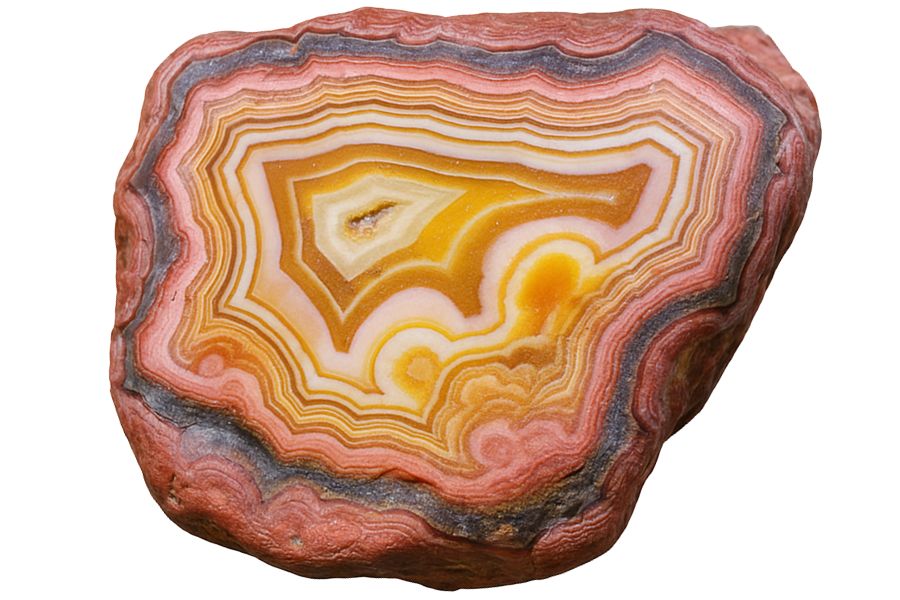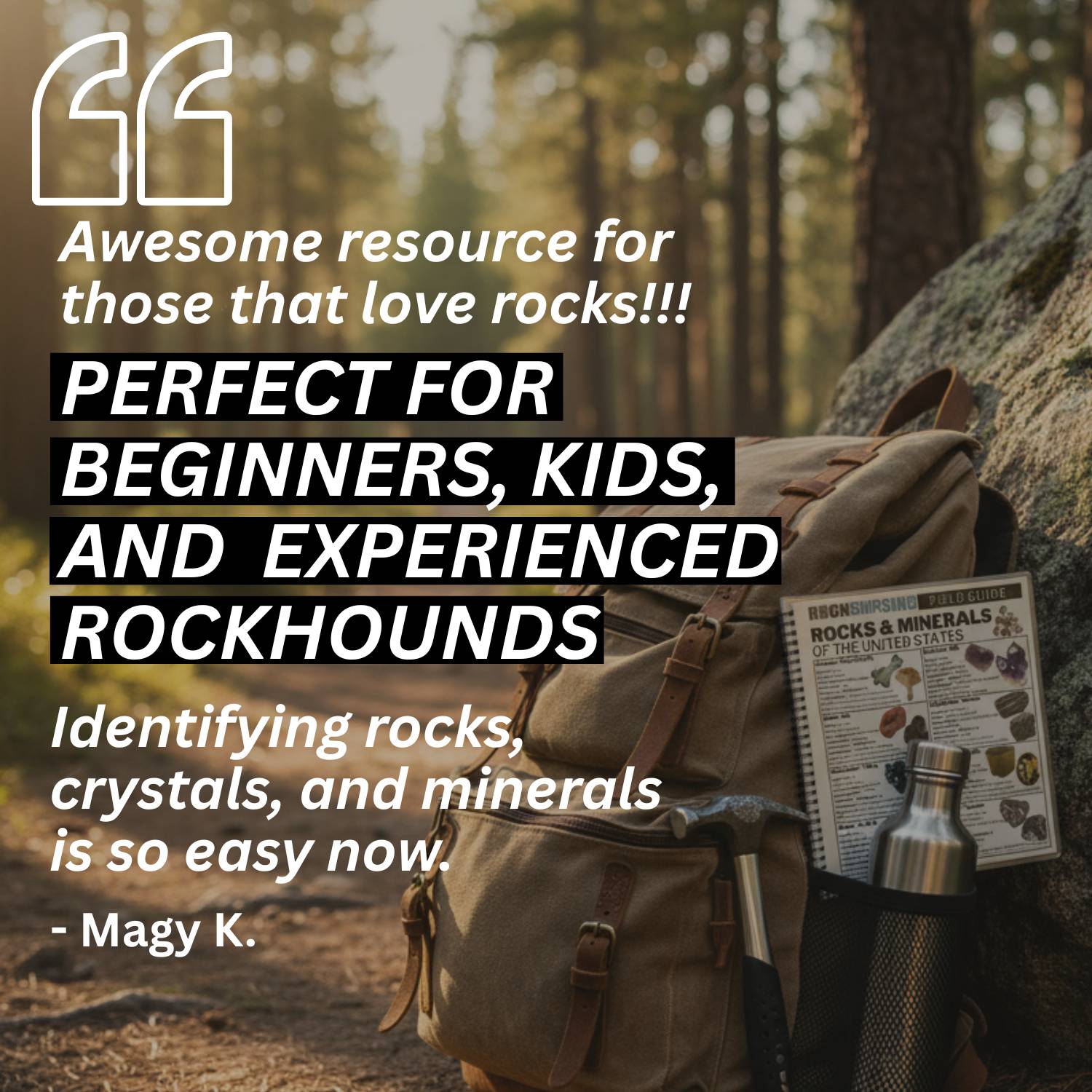If you’re heading out to hunt for agates in Nebraska, you’ve picked a great place for it. People regularly walk away from certain areas of the state with pockets full of these beautiful, banded stones.
You don’t need to wander aimlessly, though; knowing a few key spots and what to look for will make a huge difference. That knowledge will help you bring home a fantastic variety of agates you’ll be excited to show off.
We’ll point you right to those productive areas so you can quickly get your boots on the ground and start digging. Let’s find out exactly where you should begin your hunt so you can score some great pieces!
What is Nebraska Agate?
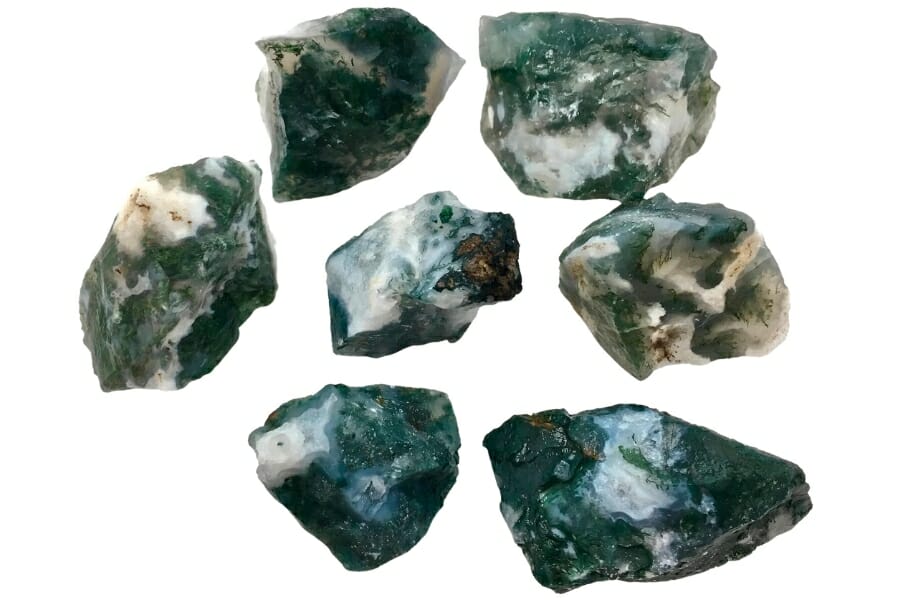
Agate is a form of chalcedony, which basically means it’s made up of tiny quartz crystals. What makes it so special is its awesome colors and patterns.
When you cut an agate open, you might find stripes, spots, or even swirly designs inside. It’s like nature’s own tie-dye! This mesmerizing beauty is one of the primary reasons for agate’s value and worth in the market.
But how did this gem get this beautiful? It usually forms when lava cools and solidifies, and gas bubbles get trapped inside. Over time, minerals seep into these bubbles and start to grow, layer by layer. These give agates their unique patterns.
You can find agates in many parts of the world, especially in places that had ancient volcanic activity. They’re often found in rocky areas, riverbeds, and beaches. Luckily, Nebraska is one of those special places where you can hunt for agates!
Now, let’s quickly go through the different kinds of agates and whether you can find them in our state:
Blue Lace Agate
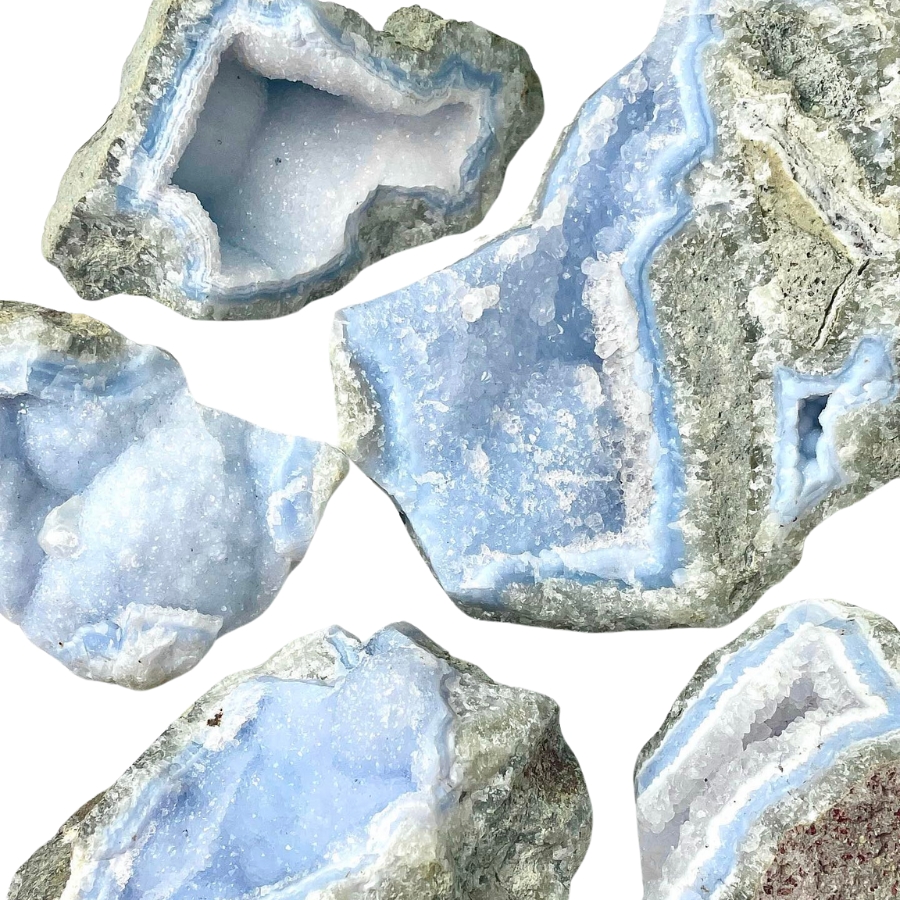
Blue lace agate is like the soft, sky-blue waves with lines that swirl and twist like delicate lace.
Its pattern comes from slow-forming layers of quartz, which create those beautiful, lace-like bands.
The bands of this agate type are often in shades of light blue, white, and sometimes a bit of grey. It’s different from other agates, which usually have more intense colors and stronger patterns.
The value of blue lace agate lies in its soft, tranquil look and the feeling of calm it brings. It’s often used in jewelry or as a decorative stone.
If you want REAL results finding incredible rocks and minerals you need one of these 👇👇👇
Finding the coolest rocks in isn’t luck, it's knowing what to look for. Thousands of your fellow rock hunters are already carrying Rock Chasing field guides. Maybe it's time you joined the community.
Lightweight, mud-proof, and packed with clear photos, it’s become the go-to tool for anyone interested discovering what’s hidden under our red dirt and what they've already found.
Join them, and make your next rockhounding trip actually pay off.
What makes it different:
- 📍 Find and identify 140 incredible crystals, rocks, gemstones, minerals, and geodes across the USA
- 🚙 Field-tested across America's rivers, ranchlands, mountains, and roadcuts
- 📘 Heavy duty laminated pages resist dust, sweat, and water
- 🧠 Zero fluff — just clear visuals and straight-to-the-point info
- ⭐ Rated 4.8★ by real collectors who actually use it in the field
Moss Agate

Instead of having the typical banding for which the different types of agates are known, moss agate has green inclusions that look like moss or trees.
These green patterns aren’t real plant material, though. They’re minerals like chlorite or iron oxide.
In some cultures, this type of agate is known as the “gardener’s stone” because of its green, plant-like appearance. It’s believed to help plants grow.
The price of moss agate can vary. It’s often quite affordable, but the more distinct and picturesque the green patterns, the more it might cost.
Fire Agate
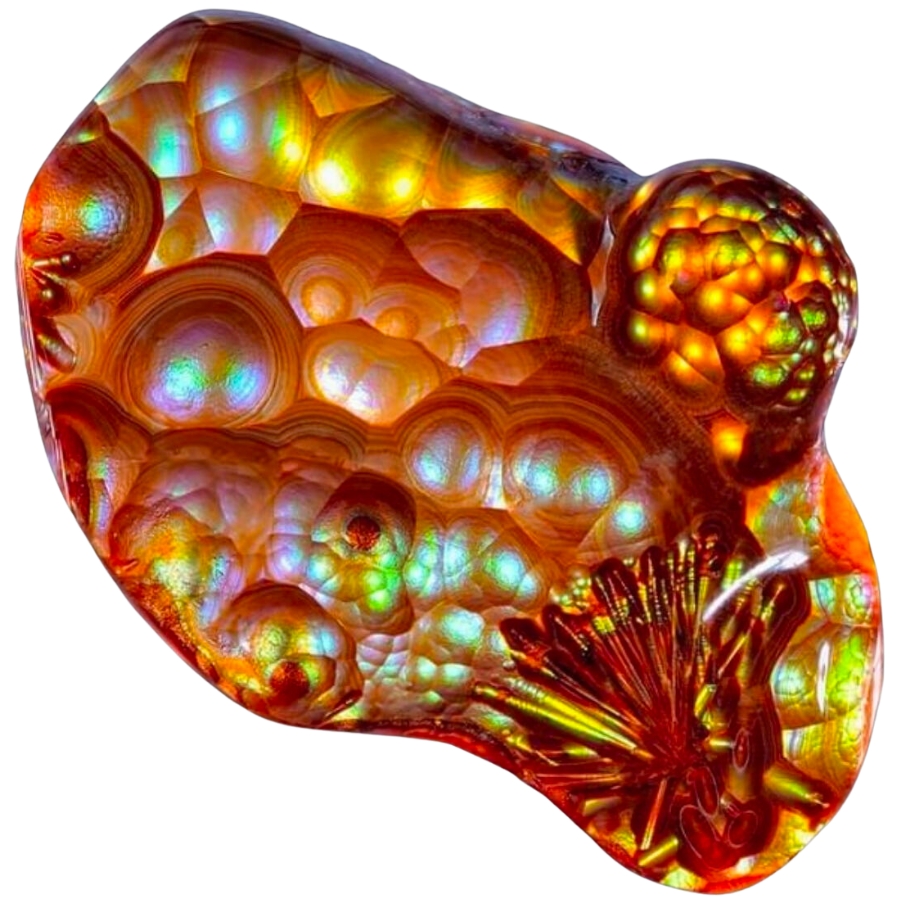
Fire agate is known for its incredible colors and the way it sparkles like fire. It’s got layers of silica and iron oxide that reflect light, creating a fiery effect.
When you look at fire agate, it’s like seeing flames trapped inside. Its colors can range from reds and oranges to greens and golds, all shimmering under the surface.
You might be wondering, “What is fire agate worth?” Well, its value comes from its rare beauty. The more color and sparkle, the more valuable the stone is.
Its fiery iridescence and lively play of color are used in jewelry pieces that are meant to stand out.
Dendritic Agate
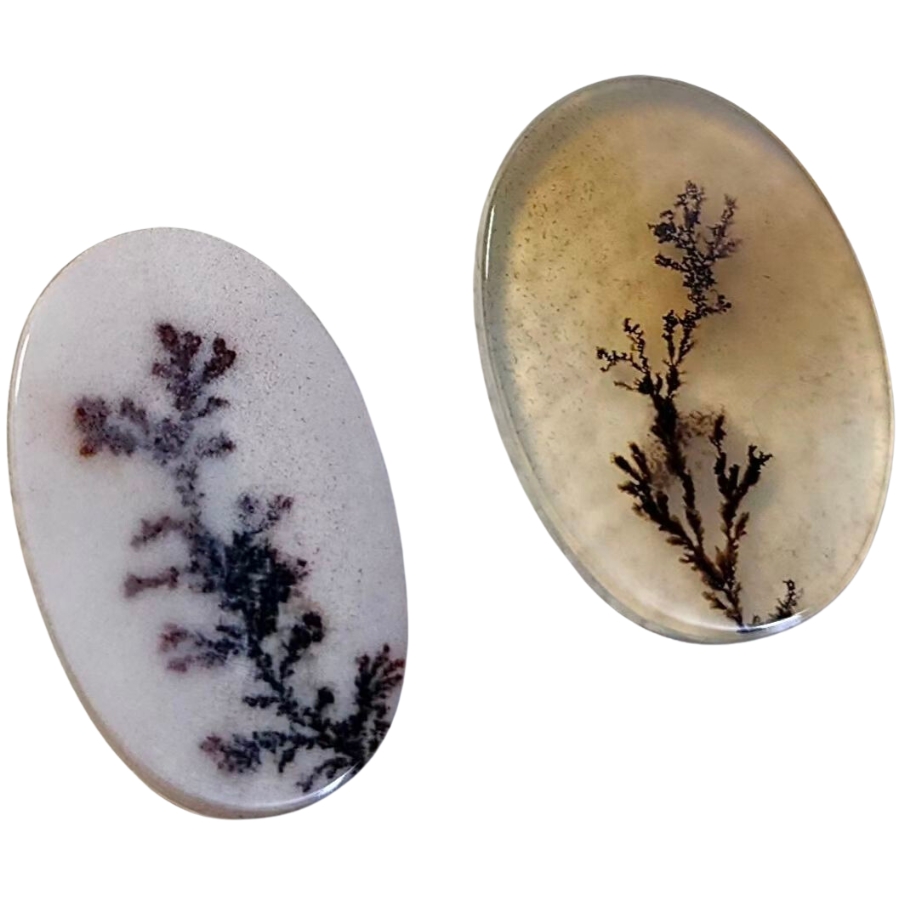
Dendritic agate is known for patterns that look like tiny trees or shrubs. Like moss agate, these patterns aren’t actual plants. They’re made of minerals, mostly manganese or iron oxides.
When you look at a dendritic agate, it’s like peering into a miniature forest or a frosty winter landscape.
The base of the stone is usually translucent to opaque, and the “dendrites”— those tree-like patterns— are often black or brown.
When it comes to how much dendritic agate is worth, it can vary. The more detailed and distinct the patterns are, the more it’s usually valued.
In some cultures, dendritic agate is believed to bring fullness and richness to life.
Crazy Lace Agate
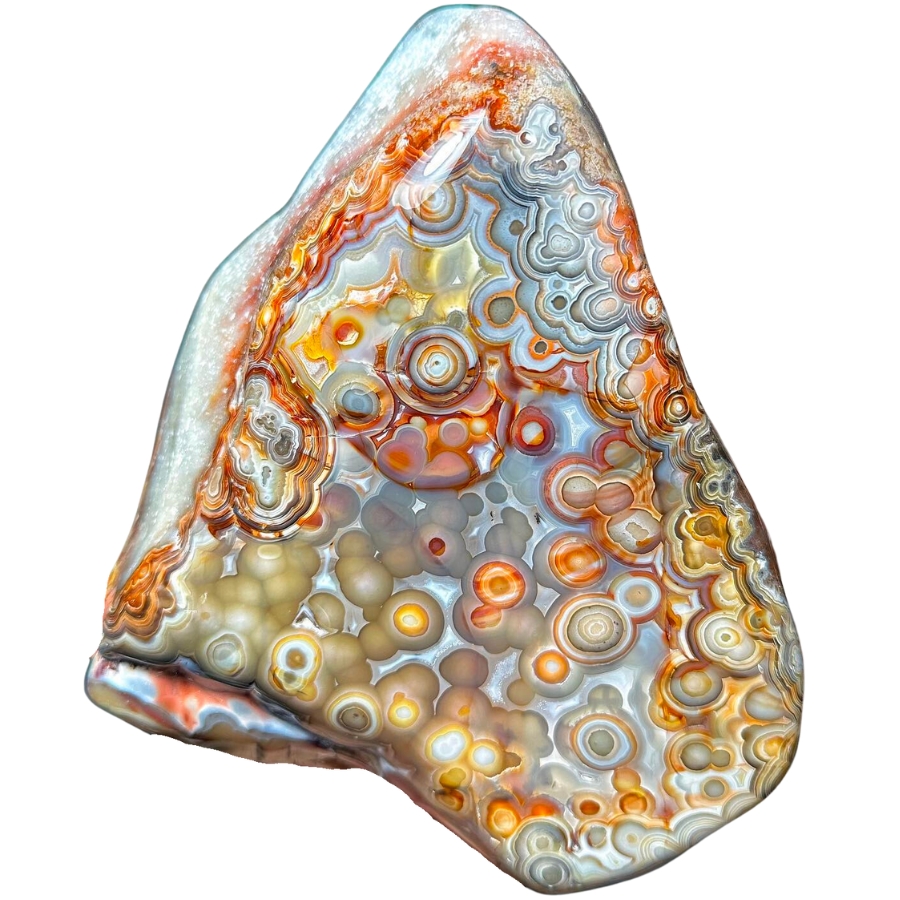
Crazy lace agate is like a party in a rock! It’s got swirls, circles, and all sorts of wild patterns dancing across it.
Its colors can be a mix of red, orange, yellow, and brown, and sometimes even a bit of gray or white.
What makes crazy lace agate stand out is its vibrant and complex patterns. No two pieces are the same. This distinctiveness is a big reason why it’s so valued.
Despite its wild and ‘crazy’ appearance, it’s sometimes called the “Laughter Stone” or “Happy Lace” because of the joy and positive vibes it’s believed to bring.
Laguna Agate
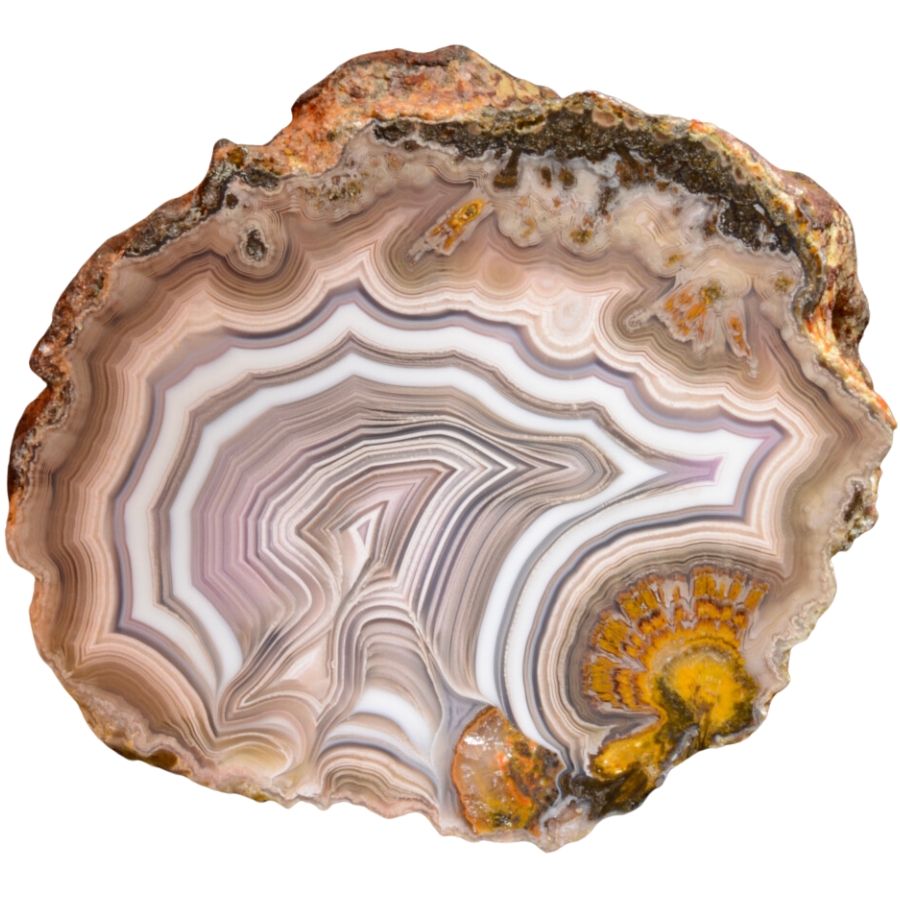
Laguna agate has incredibly sharp and fine banding. It has layers of red, orange, pink, yellow, and sometimes even purple and white all stacked in neat, tight bands.
These bands can form eye-catching patterns, like swirls, loops, and even landscapes.
The different colors of its bands come from various minerals present in the water at the time of its formation.
Laguna agate is considered one of the finest agates in the world due to its exceptional banding. This high regard among agate varieties makes it a prized possession for collectors.
Condor Agate
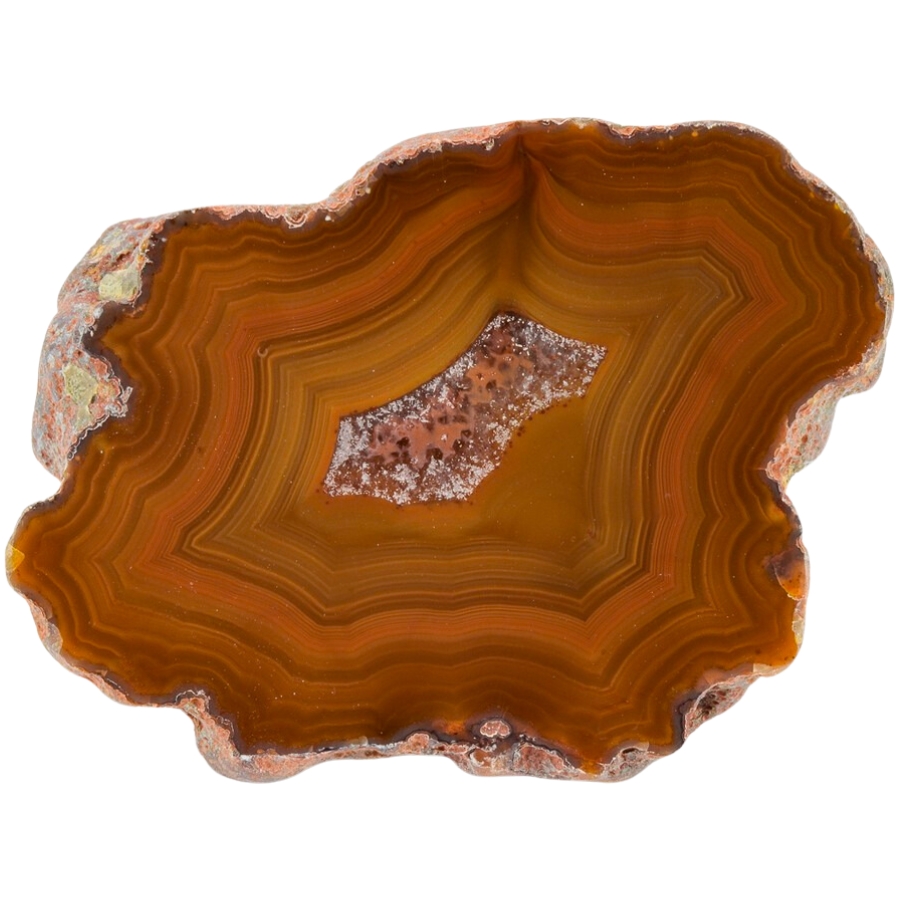
Condor agate is a real standout. It’s known for its bright, vivid colors and complex patterns.
It has reds, oranges, yellows, and sometimes even blues and greens all swirling together. These colors form in bands or in more random, artistic patterns.
The intensity and variety of its colors is what makes condor agate so special. It’s often used by artists and craftsmen who want to make a statement with their work.
Condor agate’s bold colors and patterns can turn a simple piece of jewelry or art into something really eye-catching.
Fortification Agate (Banded Agate)
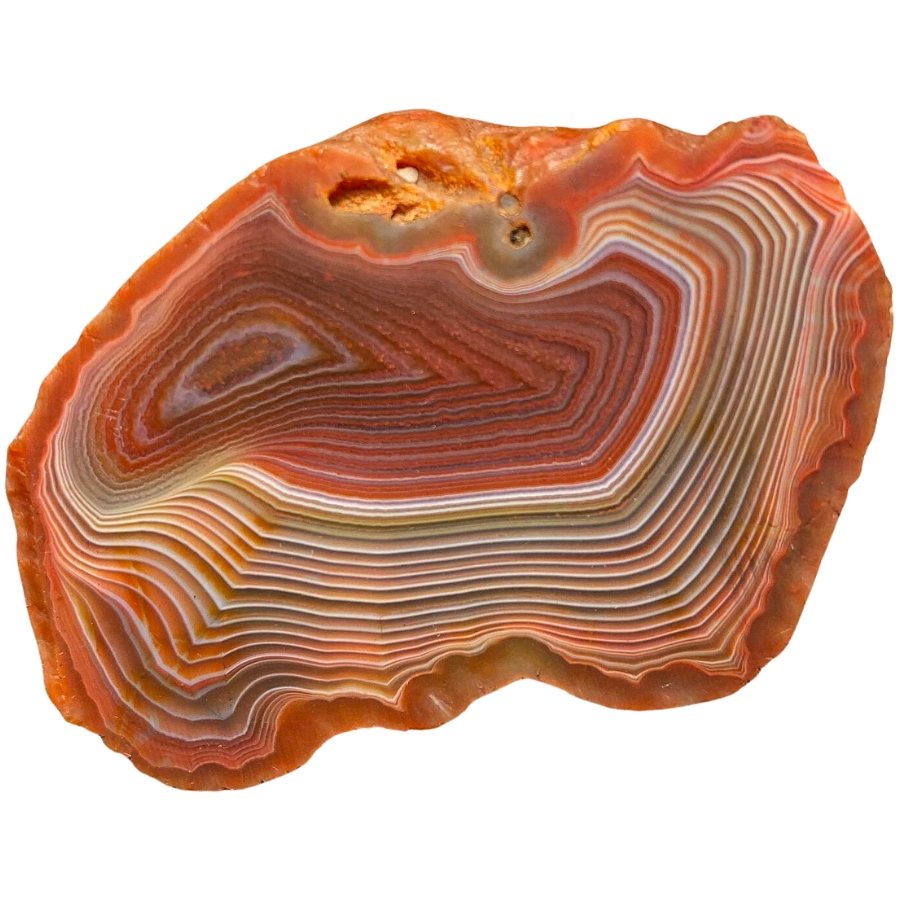
Fortification agate gets its name because the patterns inside it look like the aerial view of a fortified city.
Imagine seeing bands of color forming shapes that look like walls, with sharp angles and curves. They are usually in different colors, making each layer stand out.
If fortification agate is valuable, it’s because of its distinct patterns and colors. Its unique look makes it sought after for jewelry and as a collector’s item.
The clearer and more defined the patterns, the more valuable the stone can be. Some people also believe it can help with relaxation and calmness.
Iris Agate
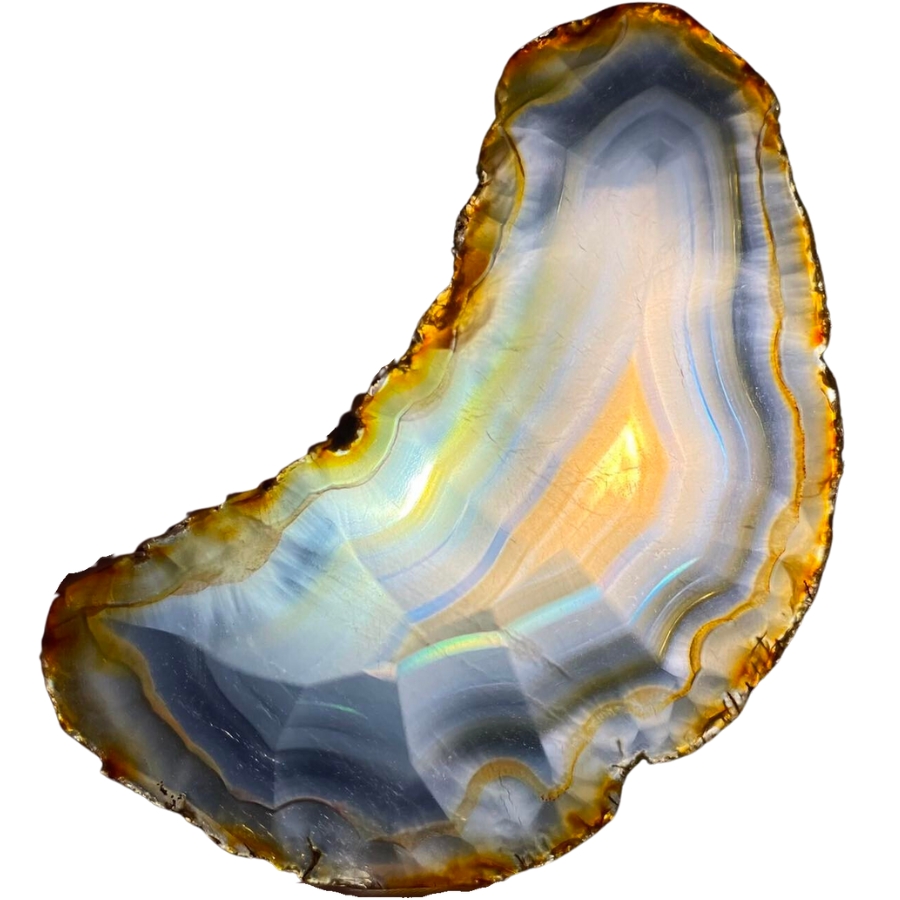
Iris agate looks like a regular agate at first, but when you hold it up to the light, something amazing happens. It shows all these rainbow colors, like light passing through a prism.
This is because it has very thin layers of silica, and when light hits these layers, it splits into all the colors of the rainbow.
The formation of iris agate is similar to other agates, but its layers are super thin, which is what creates the rainbow effect.
The value of iris agate comes from its unique ability to show these colors. In the past, people even used to think it had magical properties because of the way it showed colors. They saw it as a stone of good luck and wonder.
Plume Agate
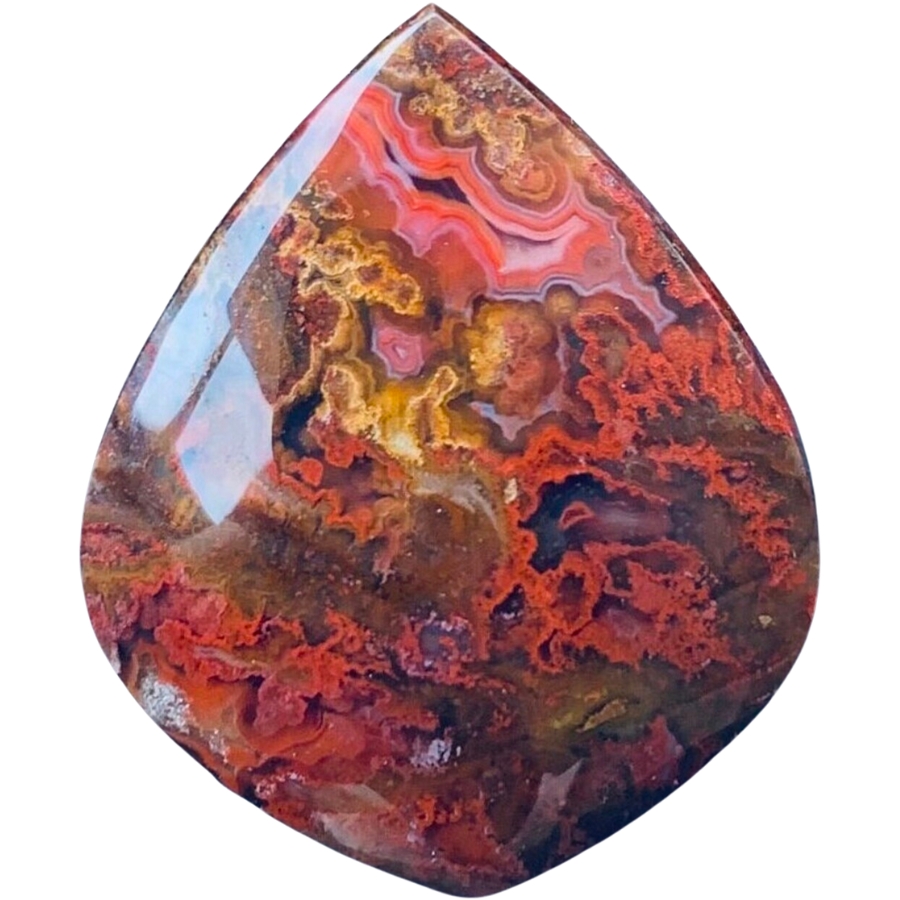
Plume agate gets its name from its patterns that look like soft, feathery plumes. These plumes can be in all sorts of colors: red, black, green, or yellow, set against a translucent or opaque background.
The way these plumes seem to float in the stone makes it look like a frozen underwater scene or like feathers caught in a breeze.
The plumes are made of minerals like manganese or iron oxide, which get trapped in the silica during the agate’s formation and create the feathery patterns.
The price of plume agate can vary depending on how clear and intricate the patterns are. The more detailed and colorful the plumes, the more the stone is usually worth.
Picture Agate (Scenic Agate)
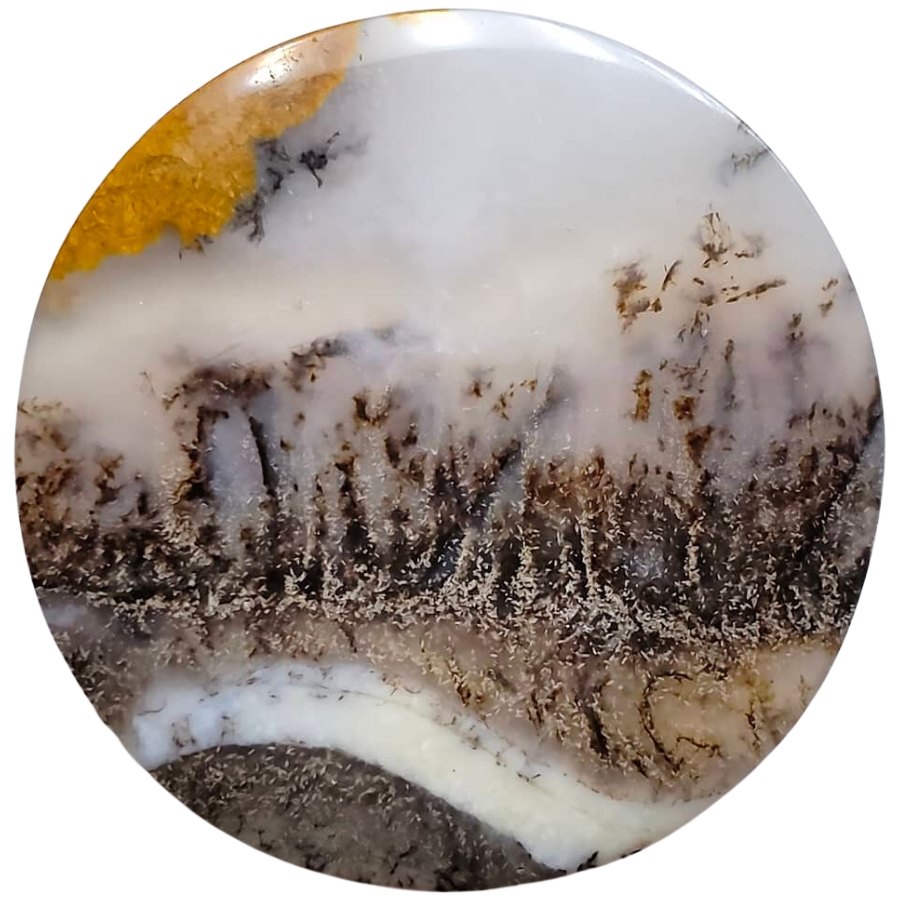
Picture agate is like a snapshot of nature captured in stone because it looks like it has pictures or scenes right inside it.
These “pictures” are actually natural patterns that resemble landscapes, mountains, trees, or even skies. They are usually in different shades of brown, white, and gray against a more translucent background.
The different patterns in picture agate or what’s also called scenic agate are made by various minerals in the water filled with silica that forms it.
If you’re thinking, “What is picture agate worth?“, its value comes from how distinct, clear, and detailed the natural “pictures” are.
Turritella Agate
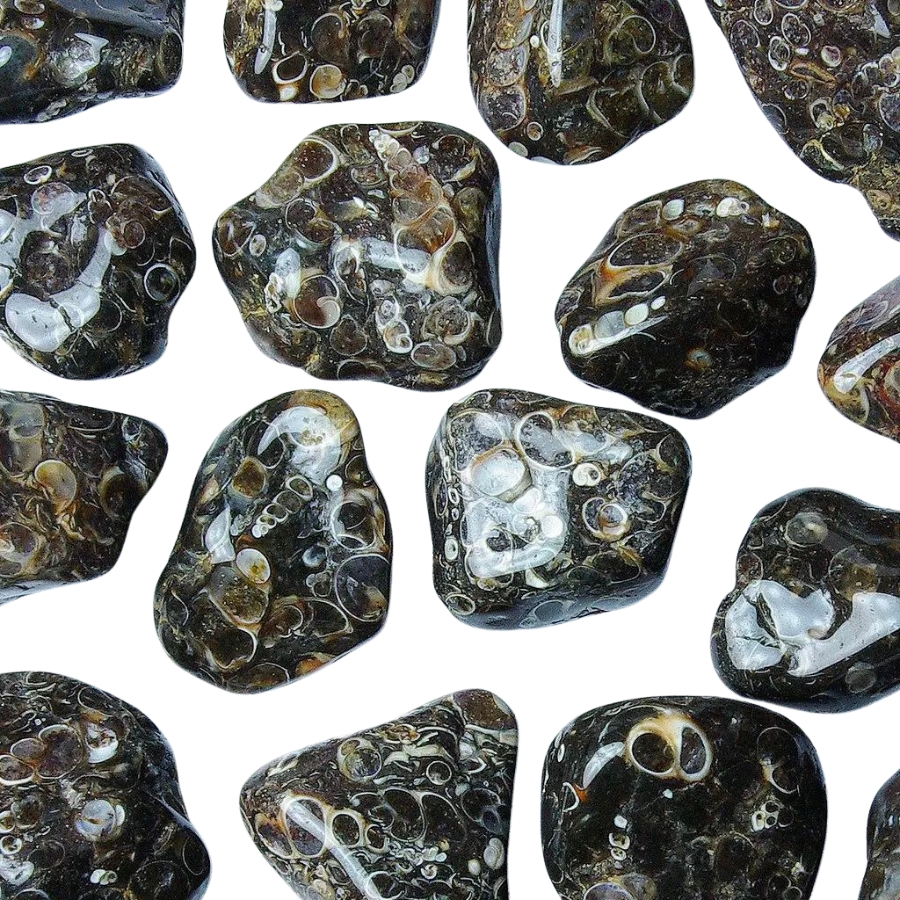
Turritella agate is not your typical agate because it’s full of fossilized snail shells! The shells belong to a creature called Turritella, a type of sea snail.
These shells are tightly packed and create a pattern that looks like a bunch of tiny, swirling towers. The background of the agate is usually a dark, earthy color, which makes the white or cream-colored snail shells really pop.
Over millions of years, these snail shells got buried in sediment and eventually became fossilized. As time went on, silica-rich water flowed through the sediment, turning it into the agate we see today.
The value of turritella agate comes from its unique blend of geology and history. More than a pretty stone, it’s a piece of ancient life preserved in rock.
Fairburn Agate
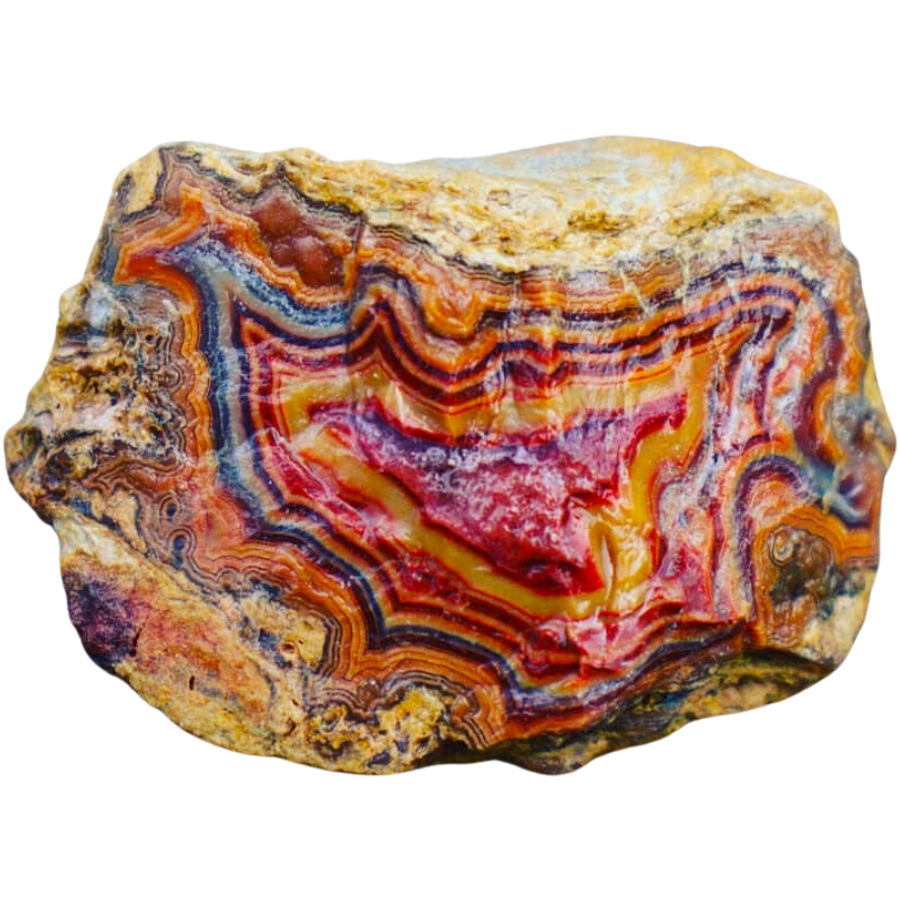
Known for its intricate patterns and bold colors, Fairburn agate is another fascinating type of agate. It usually has bands and swirls of different colors like red, yellow, orange, brown, and sometimes even pink or purple.
What’s special about these patterns is they often look like they’re in layers, creating a 3D effect. It’s like looking at a landscape made of stone.
It’s named after a place called Fairburn in South Dakota. This gives a clue about where it was first discovered.
People value Fairburn agate for the skill it takes to cut and polish it, which makes the patterns and colors really stand out.
Sagenite Agate
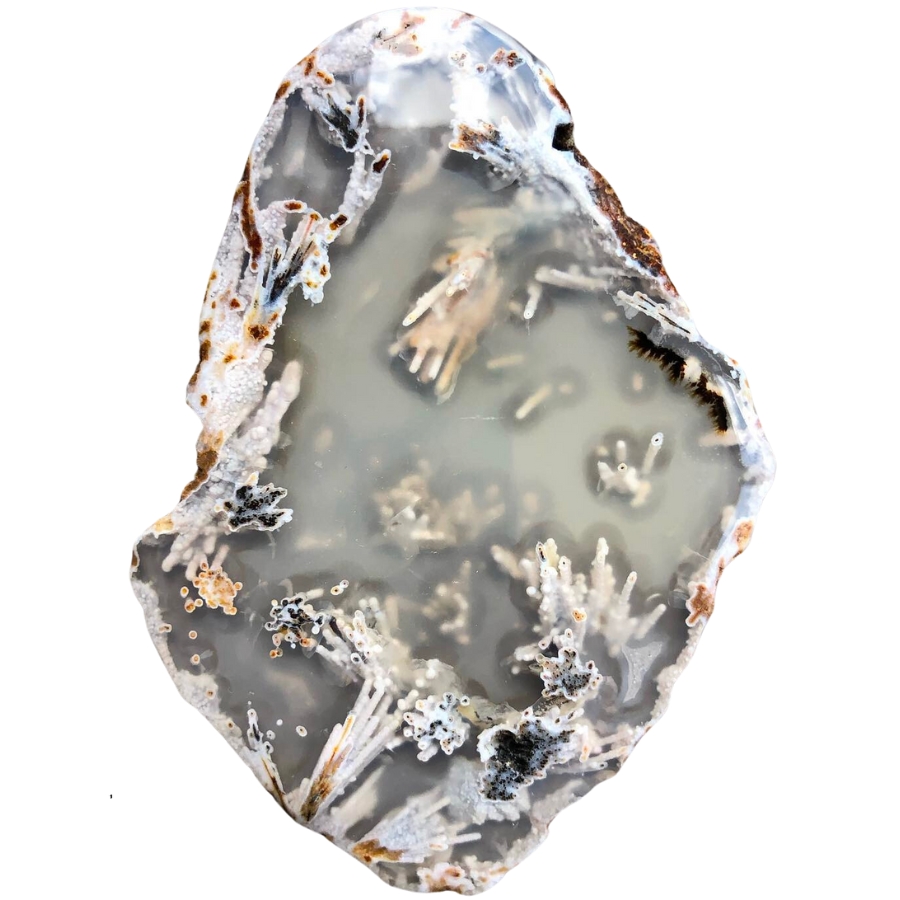
Sagenite agate has needle-like inclusions that look like tiny sprays of crystals inside it. They can be gold, silver, black, or even green, and they spread out in all directions, creating an amazing pattern.
The base of the agate is usually translucent, which lets you see these intricate needle patterns clearly.
These patterns are actually other minerals, like rutile or goethite, that get trapped inside the forming agate. These minerals grow in a crystal shape, looking like needles or hair.
Sagenite agate is often used in jewelry and other decorative items, with some people thinking that its needle patterns look like fireworks or starbursts.
Tree Agate
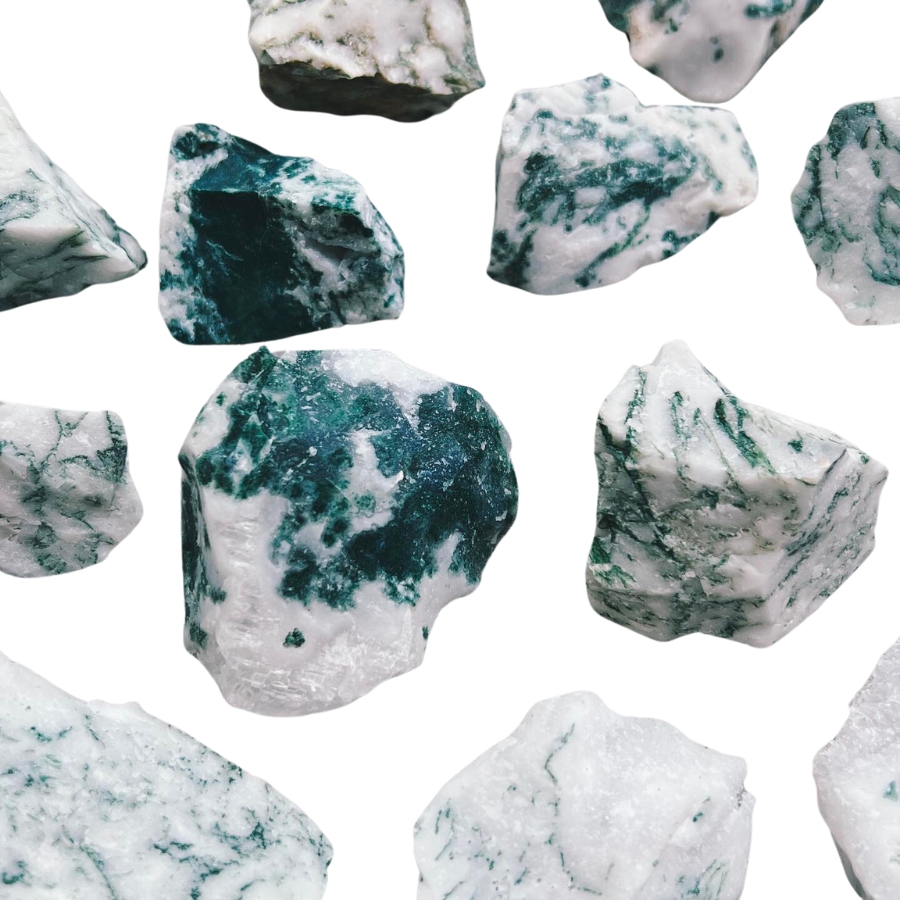
Tree agate, as its name suggests, looks like it’s got tiny trees or branches inside it. These tree-like patterns are usually green and spread out against a white or light gray background.
The green patterns aren’t actual trees, though. They’re made of minerals like chlorite or manganese.
Each piece of tree agate is different. You won’t find two that are exactly the same. It’s valued for its looks and it’s often used in jewelry and decorations.
The key factors in our recommendations are:
- The deep experience and understanding of our team about the area
- Recommendations from local groups and clubs
- How easy it is to get the a particular location
- Safety and potential hazards when collecting
- Weighing private and public locations
- The ability for both experienced and novice agate enthusiasts to find great samples
With these factors in mind we’ve been able to put together a fantastic list that just about anyone can use!
Kids. Beginners. Pros. Doesn’t matter. This book has become the go-to because it works for everyone.
Magy put it bluntly: “Identify rocks, crystals and minerals is so easy now!”
That’s not by accident, the photos are crisp, the callouts are simple, and the design is rugged enough to throw in a backpack without worrying. Whether it’s your first geode or your hundredth, this guide keeps the fun part simple: finding more treasures.
The Best Spots To Find Agates in Nebraska
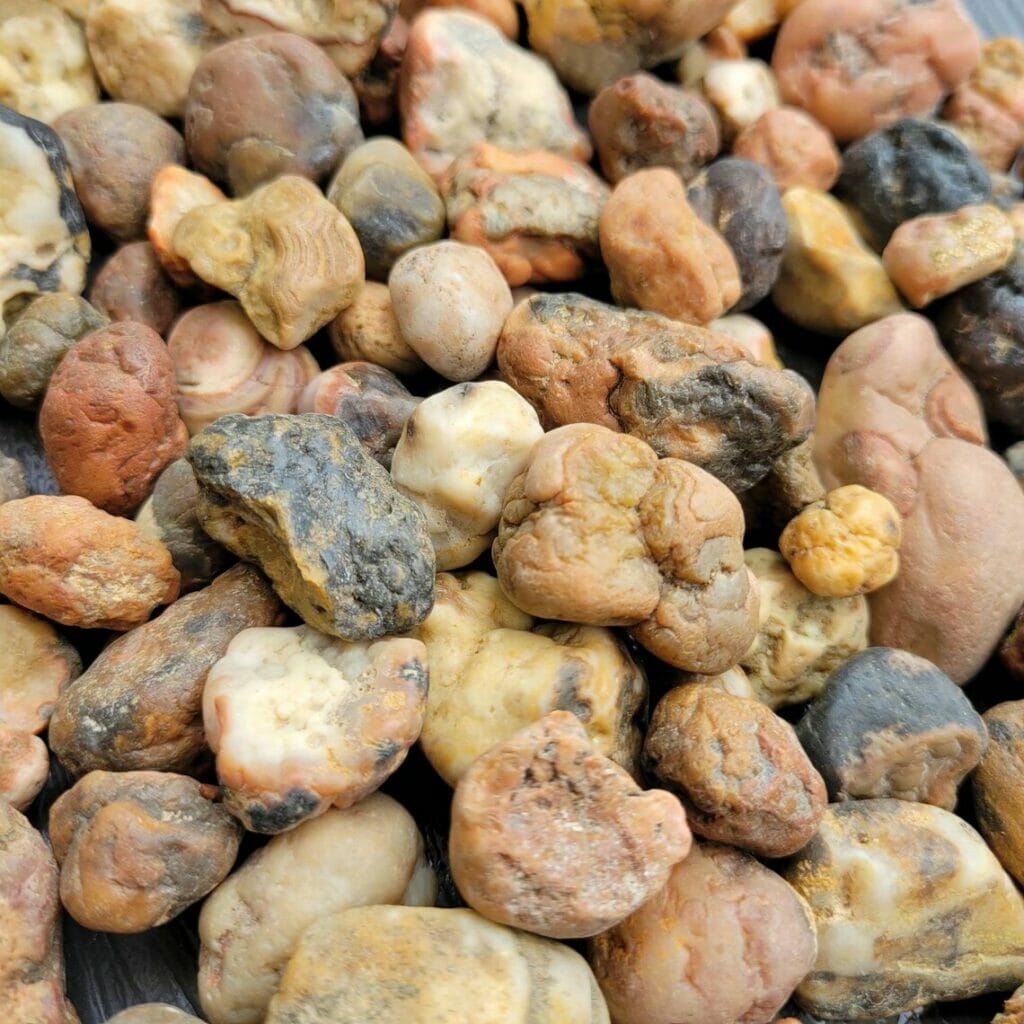
Nebraska has many great gem mine spots, but not all of them are sure sites for finding agates, too. If you want to focus your search on agates, below are the best places for you to explore:
Always Confirm Access and Collection Rules!
Before heading out to any of the locations on our list you need to confirm access requirements and collection rules for both public and private locations directly with the location. We haven’t personally verified every location and the access requirements and collection rules often change without notice.
Many of the locations we mention will not allow collecting but are still great places for those who love to find beautiful rocks and minerals in the wild without keeping them. We also can’t guarantee you will find anything in these locations since they are constantly changing.
Always get updated information directly from the source ahead of time to ensure responsible rockhounding. If you want even more current options it’s always a good idea to contact local rock and mineral clubs and groups
Agate Fossil Beds National Monument
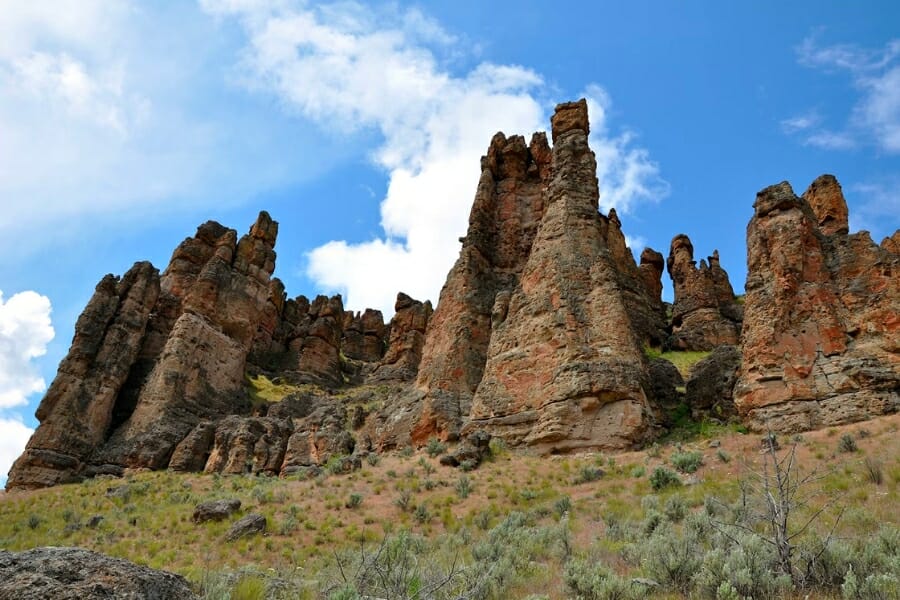
Agate Fossil Beds National Monument spans over 3,000 acres, showcasing the beauty of the Great Plains. Its landscape is vast and open, with rolling grasslands that seem to stretch endlessly under the big Nebraska sky.
But don’t let the tranquil surface fool you! Beneath these grassy knolls lies a fascinating record of our past. This area was once a hub of prehistoric activity, and over time, the remains of ancient creatures became fossilized in the sediment.
As the name suggests, you can indeed find agate here! These stones are intertwined with the remains of ancient mammals.
Getting to Agate Fossil Beds National Monument is a breeze. It’s easily accessible by car, with well-maintained roads leading directly to the park. Make sure to familiarize yourself with Nebraska’s collecting guidelines before starting your search.
Where we found agates in the Agate Fossil Beds National Monument
You can find fascinating agates if you explore the different nooks and crannies both inside the national monument and its immediate area outside.
Platte River
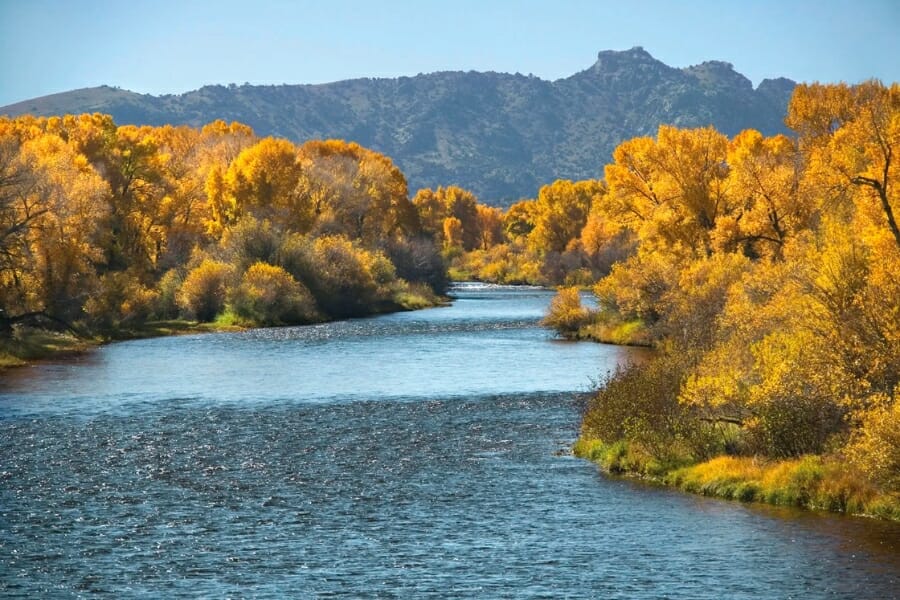
Platte River is one of Nebraska’s most iconic waterways. Stretching over 310 miles across our state, it flows eastward, eventually joining up with the Missouri River.
Over the ages, water flow has moved vast amounts of sediment, giving the Platte River a unique, braided appearance. This braided pattern has created countless sandbars and islands.
From a geological perspective, its sediments and gravels have trapped a treasure trove of ancient materials, including agates.
Reaching the Platte River is easy, especially given its significant length and accessibility. Major highways run alongside or cross it at various points, making it a favorite spot not just for rockhounds, but also for families, hikers, and nature lovers.
Where we found agates in the Platte River
You can spot stunning agates along the shorelines and sand pits of the Platte River.
Little Nemaha River
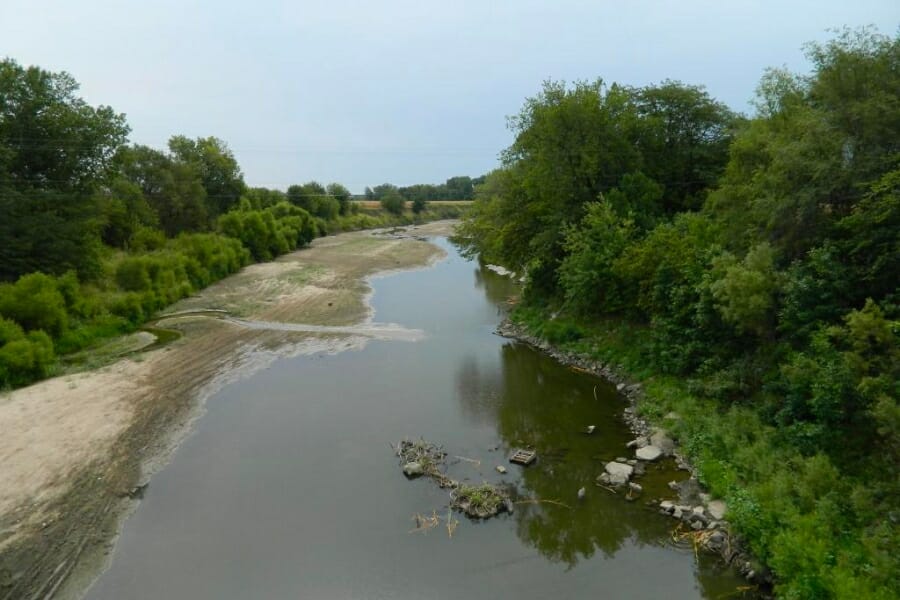
Little Nemaha River winds its way through some truly picturesque landscapes. Starting from its headwaters in the southeastern part of our state, it flows gracefully for about 75 miles before joining the Big Nemaha River.
Its journey paints a diverse picture of Nebraska’s terrain, showcasing both the gentle undulations of the land and the flatter, more expansive plains areas.
When it comes to terrain and geology, the Little Nemaha River has a lot to offer. Its banks, rich with sediment and soil, tell tales of ancient times through the presence of various minerals and rocks, including precious agates.
Reaching the Little Nemaha River is a straightforward affair. It runs through several towns and is crossed by roads at multiple points, making access quite easy.
Where we found agates in the Little Nemaha River
If you want to find agates, explore the gravels of the Little Nemaha River near Auburn.
Minnechaduza Creek
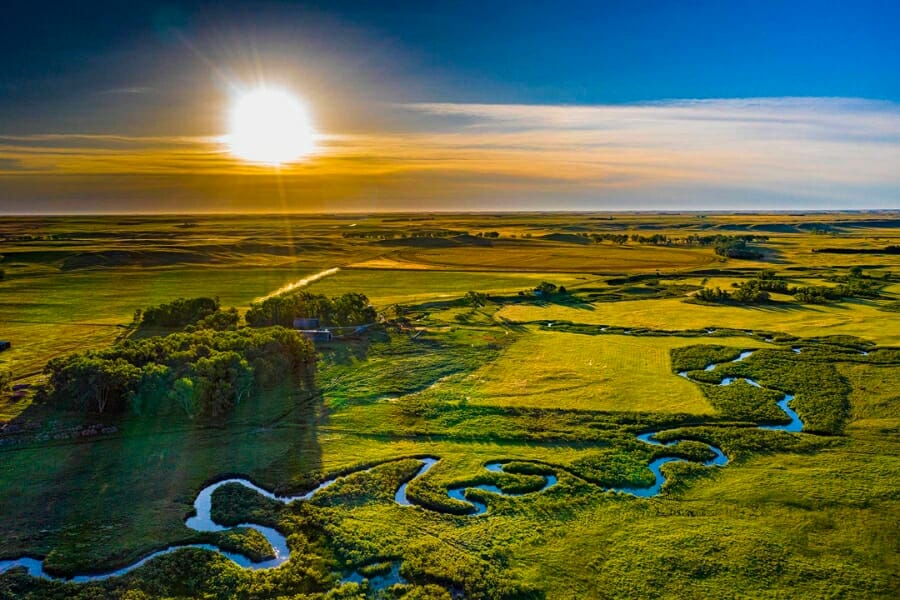
Minnechaduza Creek is a charming and often overlooked gem. Located in the north-central part of our state, it winds and weaves for several miles, creating a delightful scene of rippling waters and surrounding landscapes.
Along some stretches, the creek gently rolls over soft plains, while in other spots, it has carved more noticeable paths through the land, resulting in mini canyons and interesting rock formations.
Getting to Minnechaduza Creek isn’t a tough task. While it’s somewhat off the beaten path, there are roads and pathways that lead to prime viewing spots along the creek.
Its relative tranquility also means that you can have a more peaceful experience, without the hustle and bustle of crowded tourist spots.
Where we found agates in Minnechaduza Creek
To find agates, you can explore upstream and down on both sides of the Minnechaduza Creek and in the hills flanking it all the way to the South Dakota border.
Pine Ridge
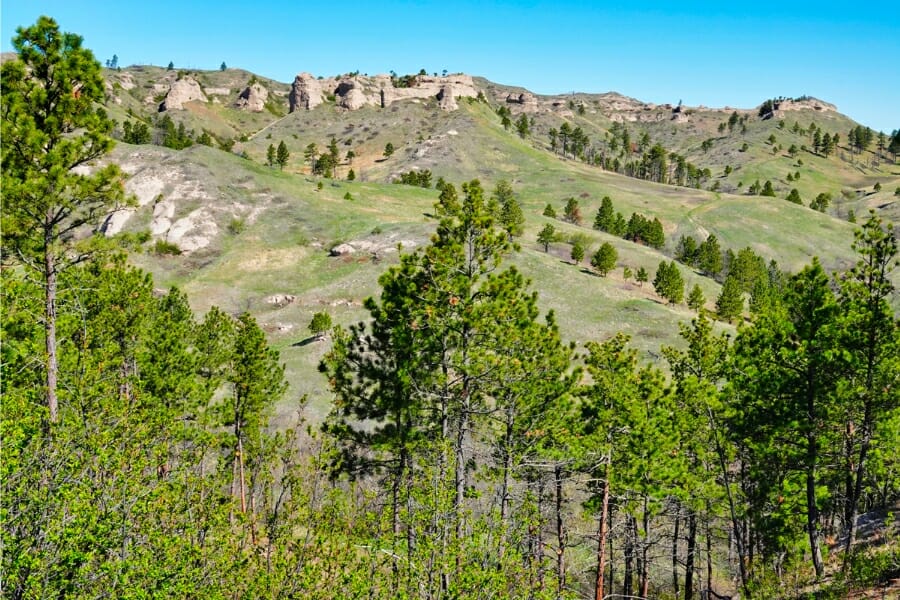
Pine Ridge spans a vast area, showcasing a blend of rugged cliffs, deep canyons, and lush pine forests. It’s a stark contrast to the flatter landscapes Nebraska is often associated with.
Tall pine trees sway with the wind atop the ridges, while the canyons below tell stories of ages gone by. The canyons here have been carved out over millennia by the forces of nature, with treasures that are a dream come true for rock lovers.
If you’re thinking of visiting Pine Ridge, you’re in for a treat. It’s easily accessible by road, with well-maintained highways and trails leading into its heart. Once there, a network of hiking paths lets you explore the region’s beauty up close.
Where we found agates in Pine Ridge
The general area of Pine Ridge offers irresistible opportunities to uncover captivating agates.
Other Great Places To Find Agates in Nebraska
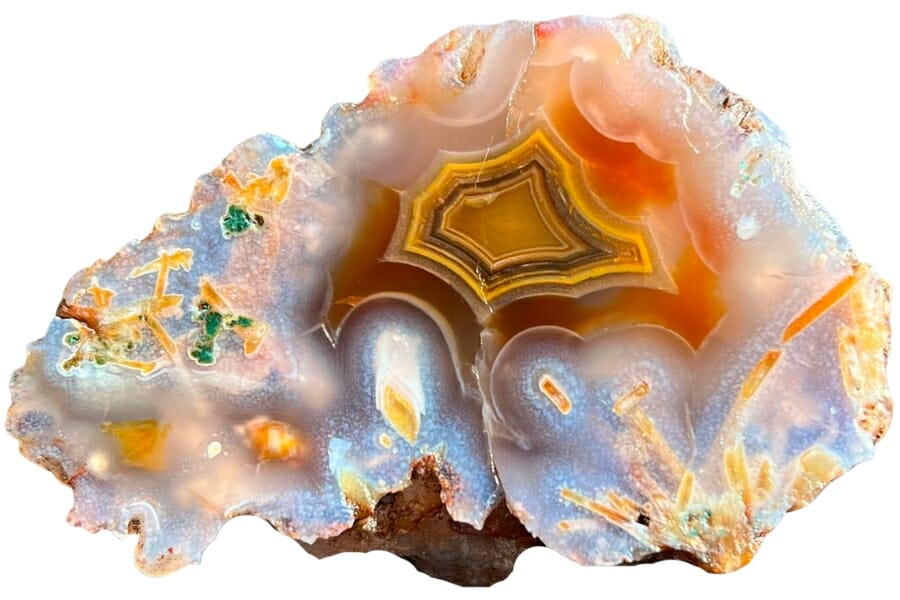
Aside from our top recommendations, listed below are some more sure sites where you can find agates in Nebraska.
Our recommendations by county
| County | Location |
| Adams | Ayr Gravel pits |
| Adams | Little Blue River |
| Cass | Snyderville Quarry |
| Cherry | Upstream in Dry Creek |
| Cherry | Bear Creek and the hills on both sides |
| Cherry | Leander Creek and the hills flanking it |
| Cheyenne | Upstream in Rush Creek and down to Garden County border |
| Cheyenne | Lodgepole Creek |
| Clay | Both sides of Little Blue River |
| Dawes | Breaks of the White River |
| Dawes | Regional Federal grazing lands in Crawford area |
| Dawes | Lone butte near the Orella railroad station |
| Dawes | Niobrara River |
| Deuel | Regional surfaces and breaks in Chappell area |
| Deuel | Upstream along South Platte River |
| Dodge | Fremont area |
| Douglas | Lyman-Ritchie gravel pit |
| Douglas | Valley area |
| Hooker | Upstream on South Fork along both shores to Jefford Lake |
| Jefferson | Regional gravel pits and stream gravels in Fairbury |
| Jefferson | Area gravel pits, quarries, and stream gravels in Steele City |
| Johnson | Sterling area |
| Keith | Upstream along the south bank of North Platte River to Kingsley Dam |
| Lancaster | Lincoln area |
| Madison | Norfolk area gravel pits |
| Morril | Area gravel pits, sandhills, and stream gravels in Bayard |
| Nance | Local gravel pits in Fullerton |
| Nance | Upstream on both sides of Loup River |
| Nemaha | Auburn area |
| Nemaha | Brock area |
| Nemaha | Johnson area |
| Nuckolls | Oak area gravel pits |
| Otoe | Gravel pits in Palmyra and Dunbar |
| Otoe | Lorton, Syracuse, and Unadilla area gravel deposits |
| Pawnee | Du Bois area gravel deposits |
| Pawnee | Table Rock area gravel deposits |
| Red Willow | South shore of the Republican River and Red Willow Creek |
| Richardson | Dawson area |
| Richardson | Stella area gravel deposits |
| Richardson | Along Nehama River in Humboldt |
| Sheridan | Area gravels, cut banks, and breaks in Hat Springs |
| Sheridan | Whiteclay Creek |
| Sheridan | All breaks, badlands, cut banks, erosion features in Whiteclay area |
| Sioux | Area gravel beds and cut banks of Hat Creek |
| Sioux | Waldron Hills |
| Sioux | Area gravels in the Montrose area |
Additional areas you can find agates
If you’re exploring wide areas, here are some of the specific spots you should focus on if you want to find agates. Oftentimes, these are the areas where they hide:
Streams and Creeks
Streams and creeks carry treasures from the past right to our feet! Over time, their waters erode the surrounding land, breaking down larger rocks into smaller pieces.
As these pieces tumble and roll along the stream or creek bed, the softer material wears away, leaving behind harder substances, like agates.
Agates are tough and resistant to wear, so as water flows over Nebraska’s landscape, it uncovers hidden agates and transports them downstream. Over time, these gemstones get trapped in the gravel beds of streams and creeks.
Rivers and Riverbeds
As rivers flow, they pick up rocks and minerals from their sources and carry them downstream. Over the journey, its waters act like nature’s sandpaper, grinding away the softer materials and leaving behind the tougher ones. Among these tough treasures are agates!
Agates, with their splendid patterns and bands, are hardy gemstones. They resist erosion better than many other rocks. That’s why, as a river erodes its surroundings, these beautiful stones often remain intact.
In Nebraska, rivers meander through this geologically rich land. In doing so, they unearth and transport agates to different parts of our state.
Sediment Deposits
Sediment deposits are formed from particles that settle over time, often in layers. Among the treasures found in these layers are agates, which are both beautiful and resilient.
Since agates are harder than many surrounding materials, they endure as softer particles erode away.
Nebraska’s history of ancient volcanic activities and river movements has resulted in rich sedimentary layers. As these layers have been laid down over millions of years, they’ve captured and preserved many agates within them.
Common Agate-Hunting Questions
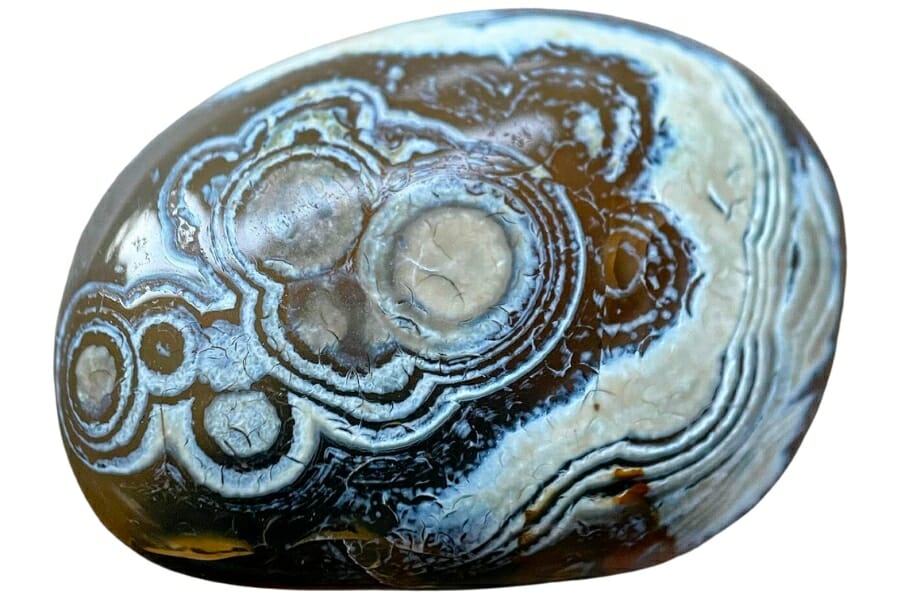
Here, we’ll answer the most common questions by those who have gone agate-hunting in Nebraska, in case you have the same question in mind.
Is it illegal to collect agate in Nebraska?
The legality of collecting agates varies based on where you are and whose land you’re on.
On private property, you need the landowner’s permission to collect anything, including agates. On public lands, regulations can differ. Some areas may allow casual rockhounding for personal use, while others might prohibit collection entirely.
That’s why it’s essential to check the rules of the specific area you’re interested in, such as national parks, state parks, or other protected lands. For more information, visit the official website of the Nebraska Department of Environment and Energy.
The Best Places To Buy Agates In Nebraska
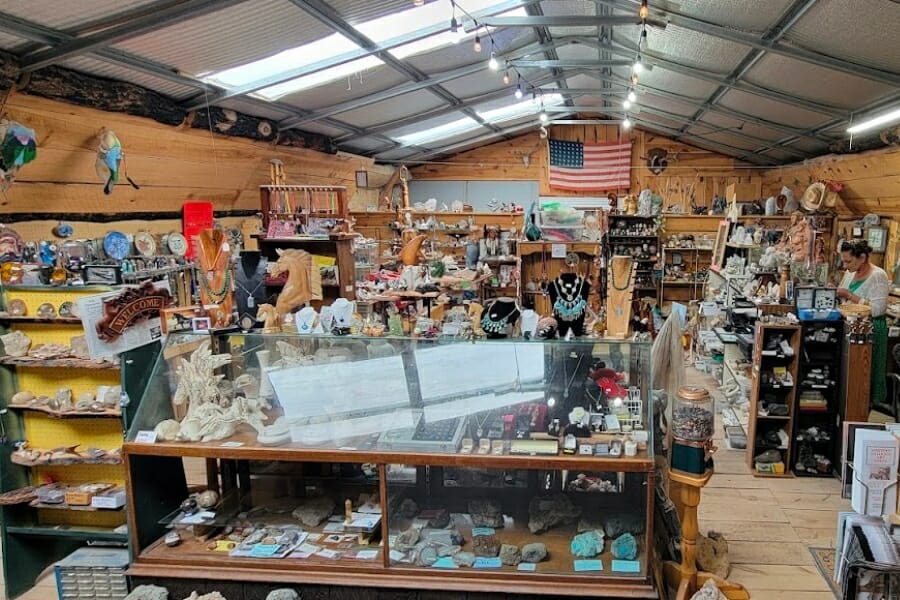
Another great way for you to take a peek into the wonders of agates in Nebraska is by visiting our local rock and mineral shops. Below are some of the great ones that we have:
- A Higher Plane – 311 W 3rd St, Grand Island, NE 68801
- Awakenings – 3506 N 147th St STE 101, Omaha, NE 68116
- Custom Gems – 8487 Frederick St, Omaha, NE 68124
- Magical Omaha – 3141 North 93rd St. Omaha, NE 68134
- Prairie Agate Rock Shop – 3591 Crazy Horse Memorial Hwy, Crawford, NE 69339
If you have any recommendations for our list please leave a comment below!

